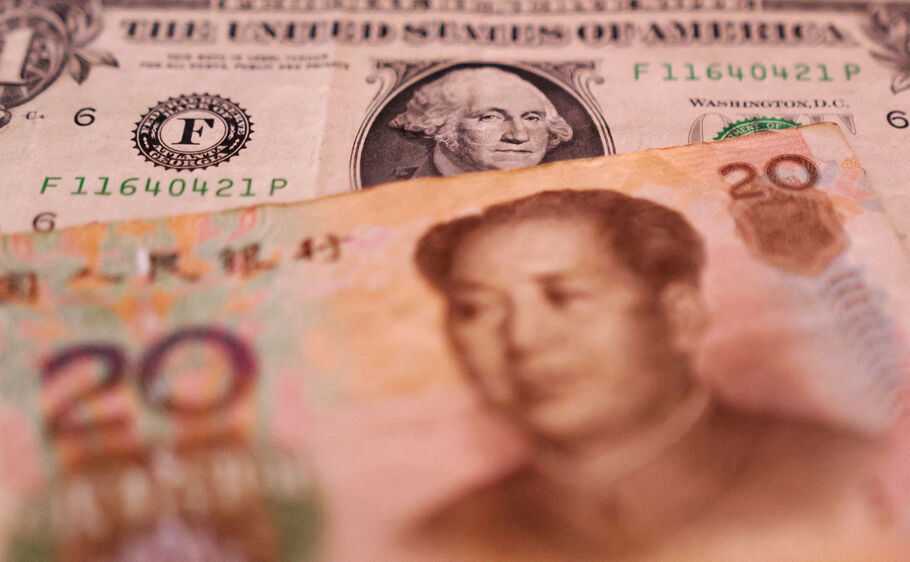AUD/JPY trims gains near 96.50 as RBA cuts rate to 3.60% as expected

- AUD/JPY holds positive ground around 96.60 in Tuesday’s Asian session.
- The RBA cut its OCR by 25 bps to 3.6% at the August meeting.
- The risk-on mood continues to weigh on the JPY, a safe-haven currency.
The AUD/JPY cross pares gains to 96.60 during the Asian trading hours on Tuesday. The Australian Dollar (AUD) remains firm against the Japanese Yen (JPY) after the Reserve Bank of Australia (RBA) interest rate decision. Traders will closely monitor the RBA Governor, Michele Bullock’s press conference at 5:30 GMT later on Tuesday.
The RBA board members decided to cut the Official Cash Rate (OCR) by 25 basis points (bps) to 3.60% from 3.85% at its August policy meeting on Tuesday. The decision came in line with the market expectations.
The RBA monetary policy statement said that labor market conditions have eased further in recent months, but various indicators suggest that labor market conditions remain a little tight. The statements noted that further easing of monetary policy was appropriate given the decline in underlying inflation back towards the target range band.
On the JPY’s front, the expectation that further policy normalization by the Bank of Japan (BoJ) could be delayed due to domestic political uncertainty and impact from US tariffs could weigh on the JPY and create a tailwind for the cross. Additionally, improved risk sentiment after US President Donald Trump extended the China tariff deadline by another 90 days undermines safe-haven currencies like the JPY against the AUD.
The attention will shift to the preliminary reading of Japan’s Gross Domestic Product (GDP) for the second quarter (Q2), which will be released later on Friday. Japan’s GDP is expected to expand 0.1% QoQ in Q2. In case of a stronger-than-expected outcome, this might help limit the Japanese Yen’s losses in the near term.
RBA FAQs
The Reserve Bank of Australia (RBA) sets interest rates and manages monetary policy for Australia. Decisions are made by a board of governors at 11 meetings a year and ad hoc emergency meetings as required. The RBA’s primary mandate is to maintain price stability, which means an inflation rate of 2-3%, but also “..to contribute to the stability of the currency, full employment, and the economic prosperity and welfare of the Australian people.” Its main tool for achieving this is by raising or lowering interest rates. Relatively high interest rates will strengthen the Australian Dollar (AUD) and vice versa. Other RBA tools include quantitative easing and tightening.
While inflation had always traditionally been thought of as a negative factor for currencies since it lowers the value of money in general, the opposite has actually been the case in modern times with the relaxation of cross-border capital controls. Moderately higher inflation now tends to lead central banks to put up their interest rates, which in turn has the effect of attracting more capital inflows from global investors seeking a lucrative place to keep their money. This increases demand for the local currency, which in the case of Australia is the Aussie Dollar.
Macroeconomic data gauges the health of an economy and can have an impact on the value of its currency. Investors prefer to invest their capital in economies that are safe and growing rather than precarious and shrinking. Greater capital inflows increase the aggregate demand and value of the domestic currency. Classic indicators, such as GDP, Manufacturing and Services PMIs, employment, and consumer sentiment surveys can influence AUD. A strong economy may encourage the Reserve Bank of Australia to put up interest rates, also supporting AUD.
Quantitative Easing (QE) is a tool used in extreme situations when lowering interest rates is not enough to restore the flow of credit in the economy. QE is the process by which the Reserve Bank of Australia (RBA) prints Australian Dollars (AUD) for the purpose of buying assets – usually government or corporate bonds – from financial institutions, thereby providing them with much-needed liquidity. QE usually results in a weaker AUD.
Quantitative tightening (QT) is the reverse of QE. It is undertaken after QE when an economic recovery is underway and inflation starts rising. Whilst in QE the Reserve Bank of Australia (RBA) purchases government and corporate bonds from financial institutions to provide them with liquidity, in QT the RBA stops buying more assets, and stops reinvesting the principal maturing on the bonds it already holds. It would be positive (or bullish) for the Australian Dollar.






